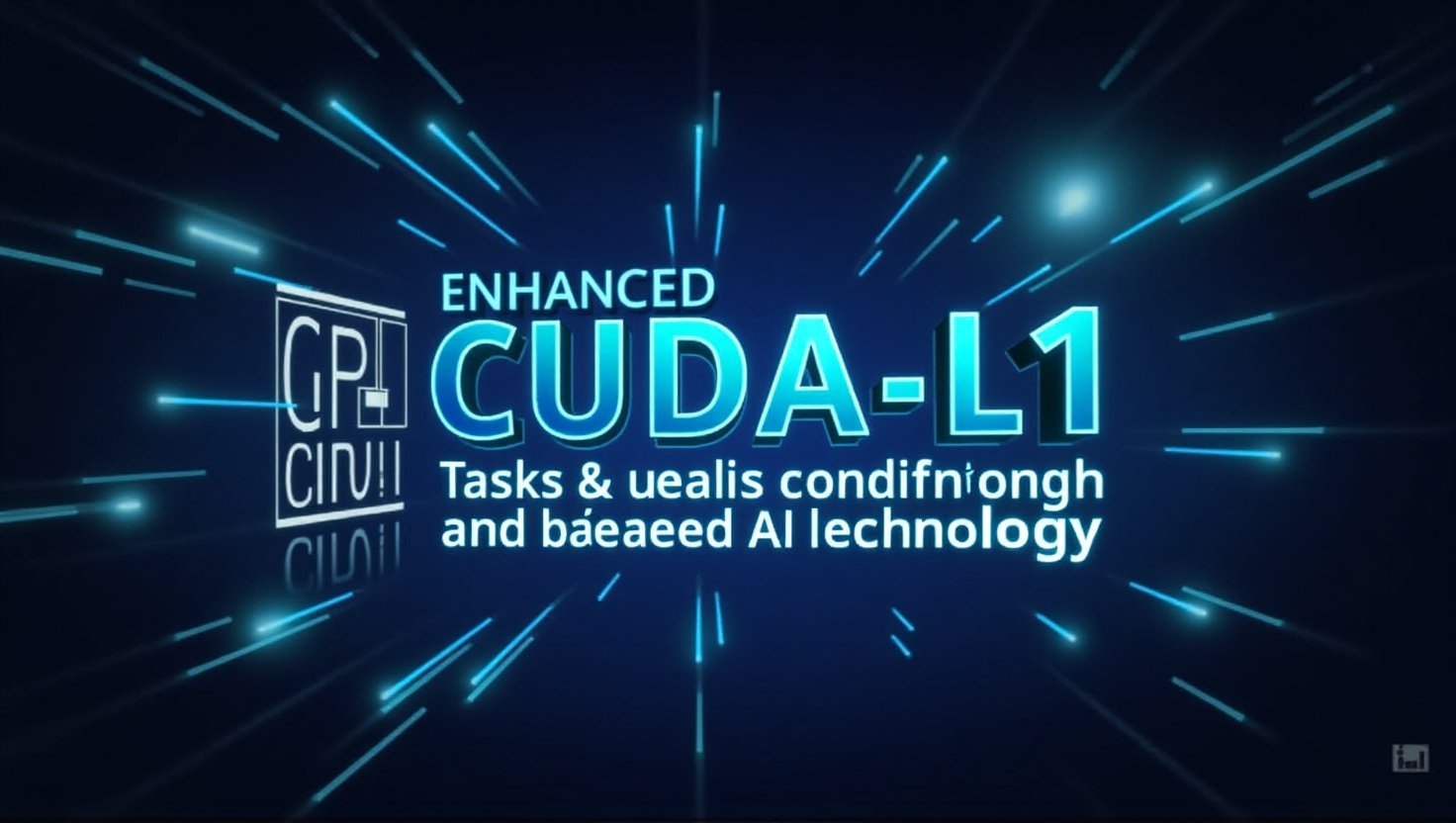In the rapidly evolving landscape of artificial intelligence, recent advancements are redefining the boundaries of GPU optimization. One of the most groundbreaking innovations to emerge is the CUDA-L1 framework developed by the DeepReinforce Team. This automated reinforcement learning (RL) framework is designed to unlock unprecedented GPU capabilities, enabling users to harness triple the computational power previously attainable.
Imagine an AI that not only learns from vast datasets but also optimizes its performance on the fly, securing its place as an essential component of modern computing. CUDA-L1’s utilization of Contrastive Reinforcement Learning allows for identifying both established and innovative optimizations, showcasing its significance in maximizing performance without the need for extensive human input.
By understanding how CUDA-L1 reshapes the process of GPU tasks, we can appreciate its transformative potential in a world where speed and efficiency are paramount for scientific research and technological development. The era of autonomous AI performance engineering is upon us, promising a future where GPUs operate more intelligently than ever before.
Key Features of CUDA-L1
- Tripled GPU Power: CUDA-L1 utilizes Contrastive Reinforcement Learning to unlock up to three times more power from GPUs compared to traditional methods.
- Performance Metrics: Reports show an average speedup of 3.12 times across GPU tasks, with peak accelerations reaching up to 120 times in optimized scenarios.
- Automated Optimization: The framework requires no human intervention, allowing AI to continuously discover known and novel optimizations in real-time.
- Benchmarking Results: Over 250 real-world GPU tasks have been benchmarked through KernelBench, showcasing the framework’s efficiency and reliability.
- High Success Rate: CUDA-L1 boasts a remarkable 96% success rate in enhancing performance consistently across applications.
- Optimized Memory Strategies: By focusing on advanced memory techniques, CUDA-L1 achieves maximum speedups that significantly boost computational tasks.
- Blueprint for Future AI Systems: The innovations in CUDA-L1 represent a step towards AI systems capable of self-optimization, paving the way for smarter software that can adapt based on hardware performance insights.
| Aspect | CUDA-L1 | Traditional Methods |
|---|---|---|
| Speedup | Average 3.12×, peaks at 120× | Varies, typically lower |
| Reliance on Expertise | Minimal, fully automated | High, often requires human input |
| Scalability | Highly scalable, adapts in real-time | Limited, often fixed performance |
| Benchmark Performance | 96% success rate across tasks | Varies, often case-specific |
| Memory Optimization | Advanced strategies integrated | Basic optimizations available |
User Adoption Data of CUDA-L1
As of August 2025, specific user adoption rates for CUDA-L1 have not been made publicly available. However, the framework has shown remarkable performance improvements that serve as a strong indicator of its potential market acceptance. CUDA-L1 has achieved an average speedup of 3.12x across various GPU tasks, with some tasks exhibiting peak performance enhancements of up to 120x.
These performance metrics were consistent across a range of NVIDIA GPU architectures, including A100, H100, RTX 3090, L40, and H20. This adaptability suggests that CUDA-L1 is a versatile tool for users seeking enhanced optimization for their GPU workloads.
While specific user adoption percentages may not be documented, the proven effectiveness of CUDA-L1 in real-world applications highlights its promising footprint in the advanced GPU optimization landscape, potentially attracting users looking to leverage cutting-edge technology for better performance and efficiency.
Performance Benchmarks Achieved by CUDA-L1
The performance benchmarks associated with CUDA-L1 reflect a revolutionary leap in GPU optimization capabilities. By employing advanced methods of reinforcement learning, CUDA-L1 has achieved an impressive average speedup of 3.12 times across a diverse range of GPU tasks, showcasing its effectiveness in real-world scenarios. Furthermore, in peak conditions, the framework has demonstrated acceleration levels that can reach up to 120 times, a testament to its powerful optimization strategies. These benchmarks were derived from a rigorous evaluation process that involved 250 real-world GPU tasks, benchmarked using KernelBench, ensuring a robust validation of its performance claims.
What does this mean for users and the broader AI landscape? The implications are profound. Such significant performance improvements translate to reduced computation times, enhanced efficiency, and ultimately, accelerated research and productivity in areas relying heavily on computational power, such as machine learning, data analysis, and scientific simulations. Furthermore, with a 96% success rate in optimizing performance across diverse applications, CUDA-L1 not only promises impressive results but also delivers reliability that users can count on. As we look ahead, these benchmarks indicate a future where autonomous AI systems can effectively optimize their own performance, significantly reducing reliance on specialized human expertise and paving the way for the next generation of AI-driven advancements in technology.

Expert Insights on CUDA-L1
Quotes from industry leaders emphasize the unmatched potential of CUDA-L1 in optimizing GPU performance. One expert stated, “The result is not just higher benchmarks but a blueprint for AI systems that teach themselves how to harness the full potential of the hardware they run on.” This highlights how CUDA-L1 serves as an invaluable tool for creating AI systems capable of self-optimization.
Another expert remarked, “With CUDA-L1, AI has become its own performance engineer, accelerating research productivity and hardware returns—without relying on rare human expertise.” This underscores the framework’s revolutionary ability to reduce dependence on human oversight in optimizing GPU tasks, marking a significant advancement in AI efficiency and autonomy.
These insights not only validate the importance of CUDA-L1 but also set the stage for its role in the future landscape of AI and GPU optimization, demonstrating its potential to redefine how we approach performance engineering in technology.
In conclusion, CUDA-L1 represents a monumental leap in GPU optimization through its innovative application of Contrastive Reinforcement Learning. By seamlessly automating the optimization process, it empowers users to unlock threefold improvements in GPU performance. This advancement is not merely about achieving higher speed benchmarks; it marks a transformative shift towards autonomous performance engineering where AI systems can independently refine their operations and adapt to the complexities of various tasks.
The implications of CUDA-L1 are profound, especially as demand for processing power continues to escalate among industries reliant on AI-driven computations. The framework not only enhances efficiency but also protects valuable human expertise, allowing technical teams to reallocate resources toward creativity and strategic innovation rather than routine optimization tasks.
As we navigate the future of AI, CUDA-L1 stands as a beacon of opportunity for users eager to tap into cutting-edge technology that significantly improves GPU task performance. For researchers, developers, and businesses alike, exploring the capabilities of CUDA-L1 could unveil new horizons for productivity and innovation in AI applications. Embracing this technology will undoubtedly place them at the forefront of the rapidly evolving landscape of artificial intelligence and high-performance computing.
Potential Use Cases for CUDA-L1
The CUDA-L1 framework demonstrates remarkable versatility, finding applications in various industries that demand high-performance computing. In scientific research, CUDA-L1 can enhance simulations and analyses, allowing researchers to conduct complex calculations that were previously too resource-heavy. For instance, climate modeling and biological simulations can greatly benefit from accelerated processing speeds, unlocking insights much faster.
In the gaming industry, CUDA-L1 enables the development of visually stunning graphics and dynamic gameplay experiences by optimizing rendering tasks, leading to smoother performance even under heavy graphical loads. Additionally, in the realm of machine learning, the automated optimizations provided by CUDA-L1 significantly improve the training times of models, allowing data scientists to experiment more freely and iterate quickly on different algorithms.
Beyond these sectors, CUDA-L1 also has applications in financial modeling, where rapid data analysis can provide traders with critical insights in real-time, and in video processing, where it can optimize rendering and real-time video processing tasks. Overall, the diverse potential use cases of CUDA-L1 illustrate its impactful role across various fields, underscoring the framework’s importance in driving innovation and efficiency wherever computational power is needed most.
Real-World Applications of CUDA-L1
CUDA-L1 enhances GPU performance across various industries, including scientific research, gaming, machine learning, financial modeling, and video processing. Here are some specific applications and their transformations:
- Scientific Research: Researchers at Stanford University have leveraged CUDA for computational fluid dynamics (CFD) simulations, enabling faster analysis of airflow over complex geometries, ultimately leading to advancements in aerodynamics and environmental studies. This demonstrates how CUDA transformations speed up experiments significantly and enhance research productivity.
- Gaming: Game developers employ CUDA technology to enhance physics simulations and rendering processes. With CUDA’s power, gaming companies can provide more realistic graphics and smoother gameplay experiences. This significant transformation allows players to enjoy immersive gaming worlds without lag or performance issues.
- Machine Learning: Deep learning frameworks, such as TensorFlow and PyTorch, heavily rely on CUDA to accelerate neural network training. This results in faster model development and deployment, allowing data scientists to iterate rapidly on diverse algorithms and models.
- Financial Modeling: In finance, CUDA is crucial for real-time risk analysis, option pricing, and complex simulations (e.g., Monte Carlo). High-frequency trading firms utilize CUDA to analyze market data quickly, enabling informed trading decisions based on sophisticated algorithms integrated into their systems.
- Video Processing: The film industry has adopted CUDA for rendering animations and visual effects. For instance, Pixar employs CUDA-enabled GPUs to enhance rendering capabilities in their animation pipeline, dramatically cutting down production time and allowing for the creation of visually stunning films.
By incorporating CUDA-L1, these sectors have achieved substantial efficiency improvements, making complex tasks feasible and paving the way for innovative developments within their fields.

